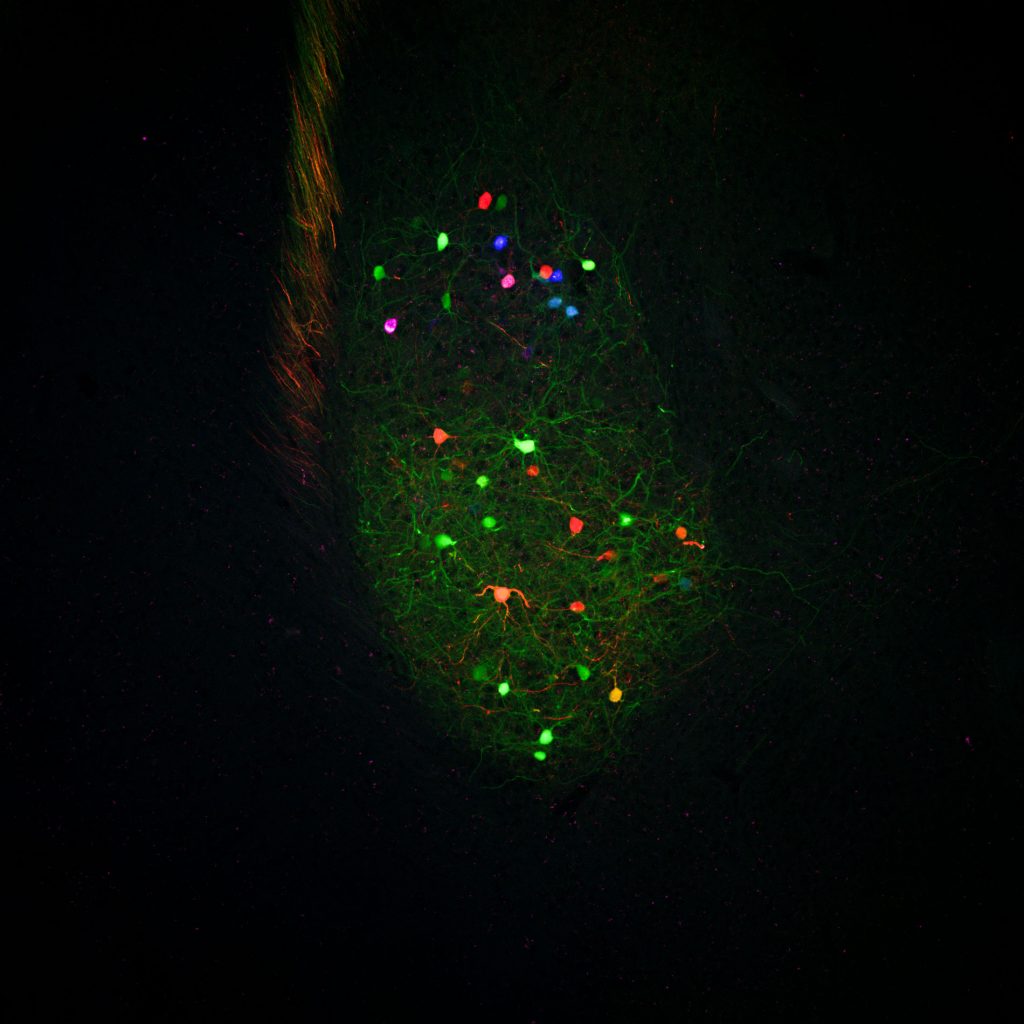| Submitted by: | Brian Marriott |
| Department: | Neuroscience |
| Faculty: | Medicine & Dentistry |
How do we determine if something is life-threatening, or life-saving? An innocuous walk in a field for one person may elicit highly anxious feelings in another individual. The sensory information is identical, but how it is perceived by the brain is dramatically different. This can in part be pinpointed to the brain structure seen here: the amygdala. The amygdala receives information from various sensory areas and adds emotional context. This image is a composite of four different tracers that have been injected into a mouse’s brain, where each dot represents a cell in the amygdala that feeds information forward to motor (green, red, and blue) or memory areas (magenta). Grayscale sensory information goes in, emotionally coloured information comes out, thus allowing past experiences to alter our emotions and reactions to current situations. My research uses these quadruple injections to probe how dense, highly connected brain areas like the amygdala organize connections to other brain areas. This has implications for how areas like these are modulated. In the amygdala, control of the amygdala is critical. Unchecked, these cells can make us highly anxious in mundane situations. Properly controlled, these cells can instead be the lifeline that pulls us from danger.

